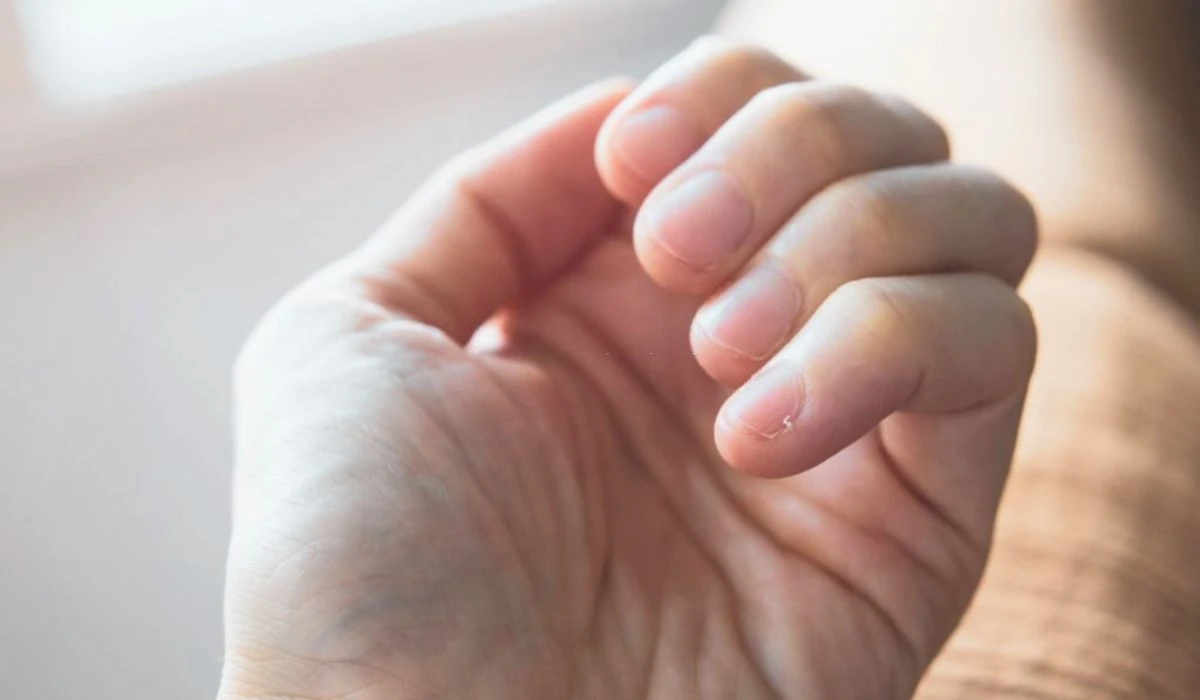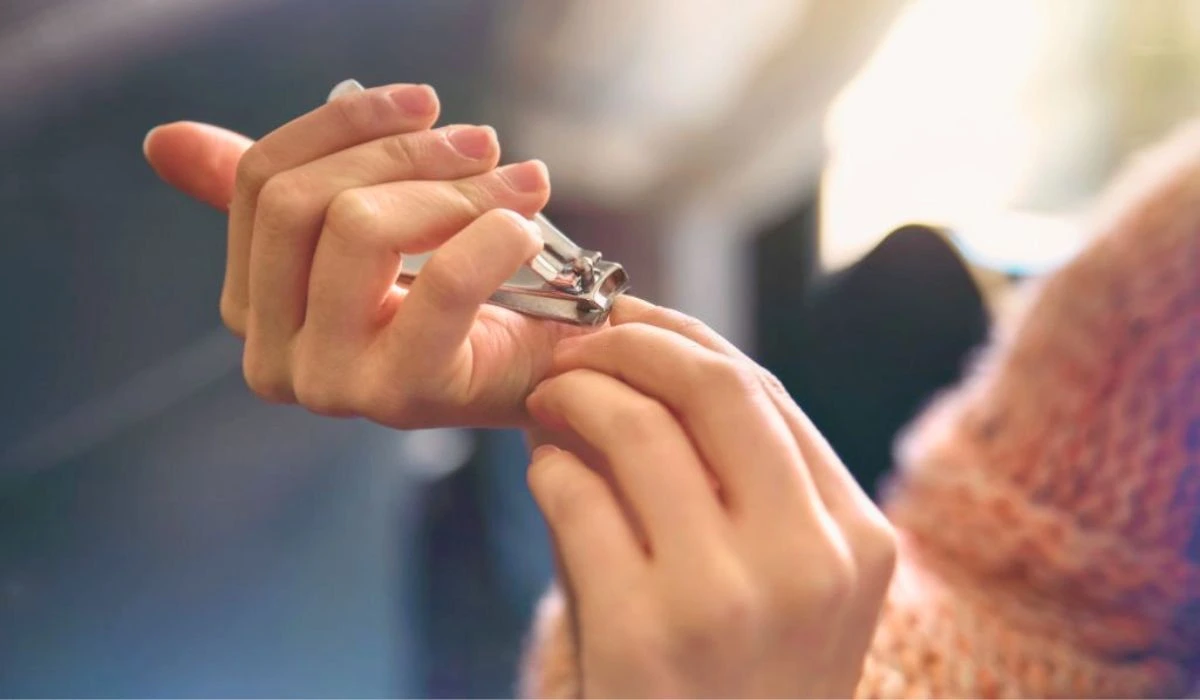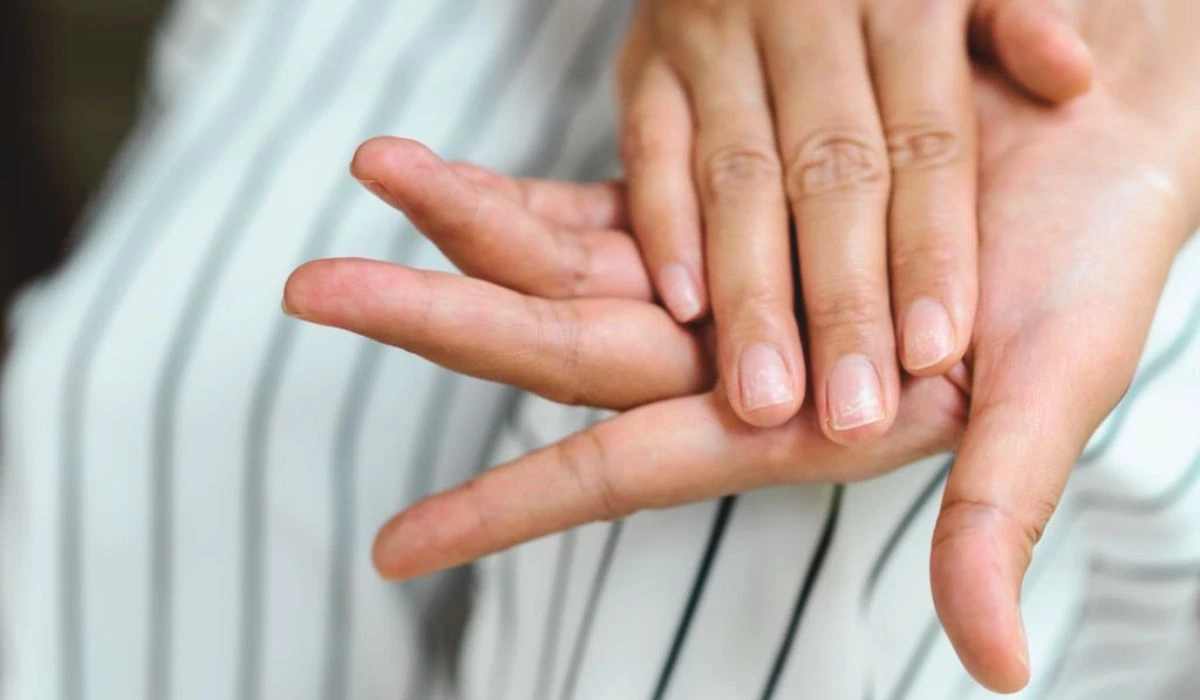Are you feeling pain in your fingernails? Not sure what’s causing it or how to treat it? Don’t worry! We’ll look into the possible causes and treatments of fingernail pain. It’s info you won’t want to miss!
Take charge of your nail health and seek care if you’re having any discomfort. Ignoring the issue could make your symptoms worse or cause complications. Knowledge is power when it comes to taking care of yourself. So, become informed and proactive in managing any fingernail pain. Your nails will be happy you did!
Possible Causes Of Fingernail Pain
Fingernail pain can be caused by various factors that can result in discomfort or tenderness in the nails. Identifying the underlying cause is crucial in determining the appropriate treatment.

Here are some possible causes of fingernail pain:
? Trauma: Injuries such as crushing, jamming, or stubbing the fingernail can cause pain. This can result in nail bed bruising, fractures, or even nail avulsion.
? Infections: Fingernail pain can also be a result of infections. Bacterial or fungal infections can lead to inflammation and discomfort. Paronychia, an infection of the skin surrounding the nail, can cause redness, swelling, and pain.
? Ingrown nails: When the edge of a nail grows into the surrounding skin, it can cause pain and lead to an infection. Ingrown nails are commonly caused by improper trimming or wearing tight-fitting shoes.
? Nail disorders: Certain nail conditions can cause pain. Conditions like nail psoriasis, onycholysis (separation of the nail from the nail bed), or onychomycosis (fungal infection of the nail) can result in nail pain.
Symptoms Of Fingernail Pain
Fingernail Pain Symptoms:
? Redness And Swelling
Fingernail redness and swelling can be signs of an underlying health problem. This could come from inflammation or infection. It might be from banging the finger or too much nail biting. Bacteria, fungi, or viruses could also cause it.
Look out for other symptoms, like pain or tenderness around the nail. That could mean an abscess or paronychia. It may even feel warm. If that’s the case, see a doctor.
? Pus Or Discharge
Fingernail pain with pus or discharge is a cause for alarm. Here are three important points:
- Pus is a thick, yellowish fluid. It can be a sign of a bacterial or fungal infection.
- Discharge is any fluid coming from the affected area. It could be painful, red, or swollen.
- Pus or discharge could have a bad smell. This suggests a severe infection that needs medical attention.
? Changes In Nail Shape Or Texture
Changes in nail shape or texture can be a sign of underlying health issues. From brittle nails to ridges, pits, or depressions, these changes are not just cosmetic. Spoon-shaped or concave nails may point to iron deficiency anemia.
Dry and brittle nails could be a symptom of hypothyroidism. Horizontal grooves or depressions are called Beau’s lines and can suggest a disruption in nail growth. Psoriasis and fungal infections can cause thickened, yellowing nails. Vertical ridges are usually harmless but could be linked to aging or dehydration.
If you spot any unusual changes, consult a medical professional. Early detection and treatment can help avoid further issues.
How To Treat Fingernail Pain

Fingernail pain can be treated by following a three-step guide.
- Firstly, gently clean and moisturize the affected nail to reduce discomfort and prevent infection.
- Secondly, apply a topical ointment or cream specifically designed for nail pain relief.
- Finally, if the pain persists or worsens, consult a healthcare professional for further evaluation and possible treatment options.
? Home Remedies
Nail pain can be annoying and uncomfortable. But, there’re home remedies to help.
Soak fingertips in warm water with a few drops of essential oil, like lavender or tea tree oil. This can reduce inflammation and aid healing. Apply a mix of lemon juice and olive oil to the affected nails. The acidity of the lemon juice can fight infection. And, the olive oil moisturizes and strengthens the nails.
Also, use a nail strengthening cream or treatment to improve nail health. These have ingredients, like biotin, keratin, and vitamin E, to nourish and protect the nails. This will make them stronger and reduce pain.
? Medical Treatment Options
Fingernail pain can be relieved with over-the-counter medications, like acetaminophen or ibuprofen. When the pain is severe and persistent, a healthcare professional should be consulted for prescription pain meds.
Antibiotics may be prescribed if infection is suspected. For injuries or fractures, splinting or immobilizing is recommended. In some cases, surgical intervention may be needed for chronic pain from conditions like ingrown nails or tumors. Acupuncture and creams with capsaicin can provide temporary relief too.
If you’re dealing with fingernail pain, talk to your healthcare provider. Understand the potential benefits and risks of each treatment.
Prevention Tips For Fingernail Pain
Preventing Fingernail Pain: Helpful Measures to Follow
To keep your nails free from pain and discomfort, try implementing the following strategies:
✅ Proper Hygiene: Maintain good nail hygiene by keeping your nails clean and dry. Regularly wash your hands and use mild soap. Avoid using harsh chemicals or nail products that may irritate your nails.
✅ Avoid Nail Biting: Quit the habit of nail biting, as it can lead to nail damage and potential pain. Instead, try keeping your nails trimmed and use bitter-tasting nail polish to deter biting.
✅ Moisturize Your Nails: Keep your nails well-hydrated to prevent brittleness and pain. Apply moisturizer or nail oil regularly to maintain their flexibility and strength.
✅ Protect Your Nails: When engaging in activities that may pose a risk to your nails, such as gardening or cleaning, wear protective gloves. This will shield your nails from trauma and prevent pain.
✅ Avoid Excessive Use of Chemicals: Limit your exposure to harsh chemicals, such as cleaning solutions or nail polish removers. Overexposure can cause nail pain and damage, so take necessary precautions and use these products in a well-ventilated area.
✅ Maintain a Balanced Diet: Ensure your diet includes essential nutrients like biotin, iron, and vitamins to support healthy nail growth. A well-balanced diet can prevent nail problems, including pain.
Also Check: Does Applying Nail Polish Cause Cancer? Exploring The Facts

